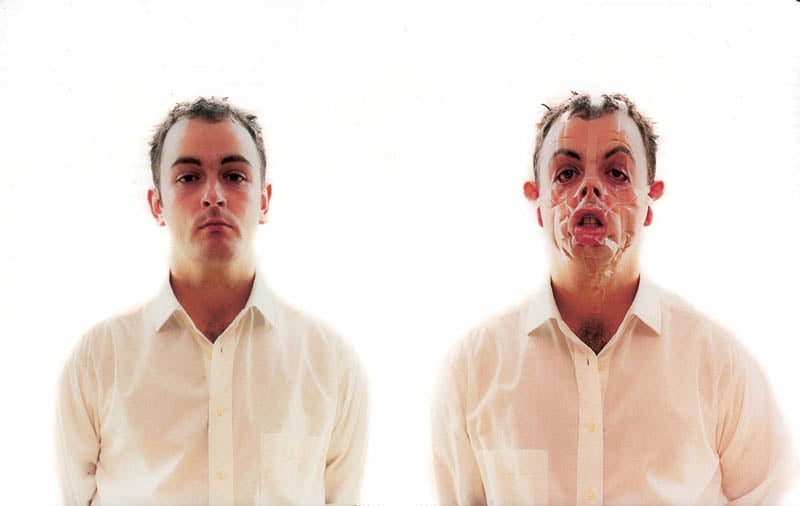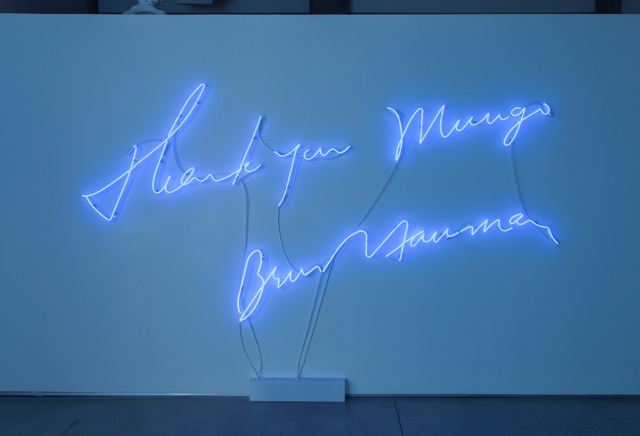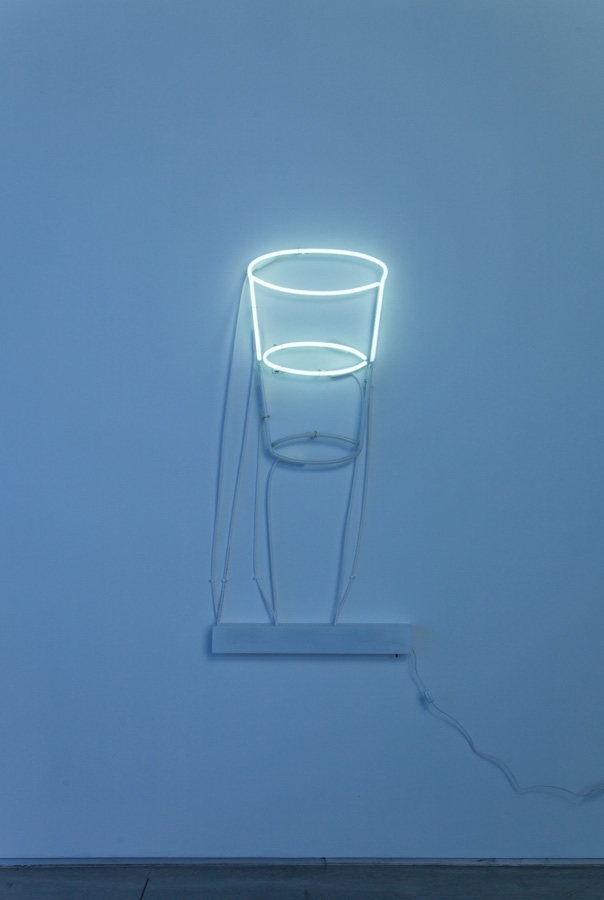The Left Hand Can't See That the Right Hand is Blind
2004 - Film & Video (Film & Video)
12:14 minutes
Douglas Gordon
Douglas Gordon’s single-channel video The Left Hand Can’t See That The Right Hand is Blind, captures an unfolding scene between two hands in leather gloves—at first seemingly comfortable to be entwined, and later, engaged in a struggle. As suggested by the work’s title, each of the hands assumes a character with a distinct personality, as if we were witnessing a lovers’ quarrel and embrace, or the embodiment of opposing forces of an internal struggle. Gordon has previously created performance-based works depicting his own body or parts of it—arms, hands, fingers, eyes—usually enacting simple, repetitive movements. Hands, in particular, have held his interest due to their ability to evoke internal emotional states and express aspects of identity, sexuality, fetishism and even our ability to communicate. These characterizations suggested by simple movements reflect his ongoing interest in notions of the ego, and internal struggles—and are illustrative of the formal techniques of doubling and mirroring, which can be seen in several of his works.
Douglas Gordon is a celebrated Scottish artist whose work revolves around the themes of memory, time and our perception of it. Spanning across film, video, installation, photography, and sculpture, his work offers a new experience of the cinematic in the space of contemporary art, creating what critic Dominique Païni described as ‘exhibition cinema.’ Interested in how we experience temporality, Gordon has often slowed down either original or appropriated footage in order to play with the viewers’ perception. An example is his celebrated work 24 Hour Psycho (1993) , in which Gordon stretched the duration of Alfred Hitchcock’s iconic movie to last 24 hours. This gesture both monumentalized time and intensified the imagery, structurally reframing the film by shifting our perception away from the movie’s original narrative and directing it towards the finer details that constitute every single frame. Several of his works incorporate that universal dichotomies: of life and death, innocence and guilt, and dual identities. Harboring the tension between opposing forces, Gordon then employs formal strategies of repetition, mirroring, and doubling to construct a deliberate ambiguity and multiplicity of meaning.
Colors:
Other related works, blended automatically

© » KADIST
Douglas Gordon
1996In Monster (1996-97), the artist’s face becomes grotesque through the application of strips of transparent adhesive tape, typical of Gordon’s performance-based films that often depict his own body in action...

© » KADIST
Mungo Thomson
2008The White Album (2008) presents a compilation of one hundred issues of Artforum magazine released between 1970 and 1979...

© » KADIST
Hank Willis Thomas
2012Bread and Roses takes its name from a phrase famously used on picket signs and immortalized by the poet James Oppenheim in 1911...

© » KADIST
Piero Golia
2007Golia’s Untitled 3 is an installation in which a mechanical device is programmed to shoot clay pigeons that are thrown up in front of a white wall...

© » KADIST
Yee I-Lann
20207-headed Lalandau Hat by Yee I-Lann is an intricately woven sculpture evoking the ceremonial headdress worn by Murut men in Borneo...

© » KADIST
Mungo Thomson
2010In Thomson’s Untitled (TIME) , every front cover of TIME magazine is sequentially projected to scale at thirty frames per second...

© » KADIST
Jonathan Monk
2003Untitled (rolled up) , is an abstract portrait of Owen Monk, the artist’s father and features an aluminum ring of 56.6 cm in diameter measuring 1.77 cm in circumference, the size of his father...

© » KADIST
Hank Willis Thomas
2012Like many of his other sculptural works, the source of I am the Greatest is actually a historical photograph of an identical button pin from the 1960s...

© » KADIST
Alessandro Balteo Yazbeck
2008Part of a larger series of photographic works, Alessandro Balteo Yazbeck’s Corrupted file from page 14 (V1) from the series La Vega, Plan Caracas No...

© » KADIST
Vincent Leong
2012The photograph Exquisite Eco Living is part of a larger series titled Executive Properties in which he digitally manipulated the images to insert iconic buildings of Kuala Lumpur in the view of derelict spaces also found in the city...

© » KADIST
Yang Zhenzhong
2012Peasant Sensation Passing Through Flesh – 3 consists of a massage chair fixed to a wall...

© » KADIST
Nicolás Paris
2012Nicolas Paris studied architecture and worked as an elementary school teacher before he decided to become an artist...

© » KADIST
Cerith Wyn Evans
2008Untitled (Perfect Lovers + 1) by Cerith Wyn Evans takes as its starting point Felix Gonzales-Torres’s seminal work Untitled (Perfect Lovers) , in which two clocks were synchronized and left to run without interference, the implication being that one would stop before the other...







